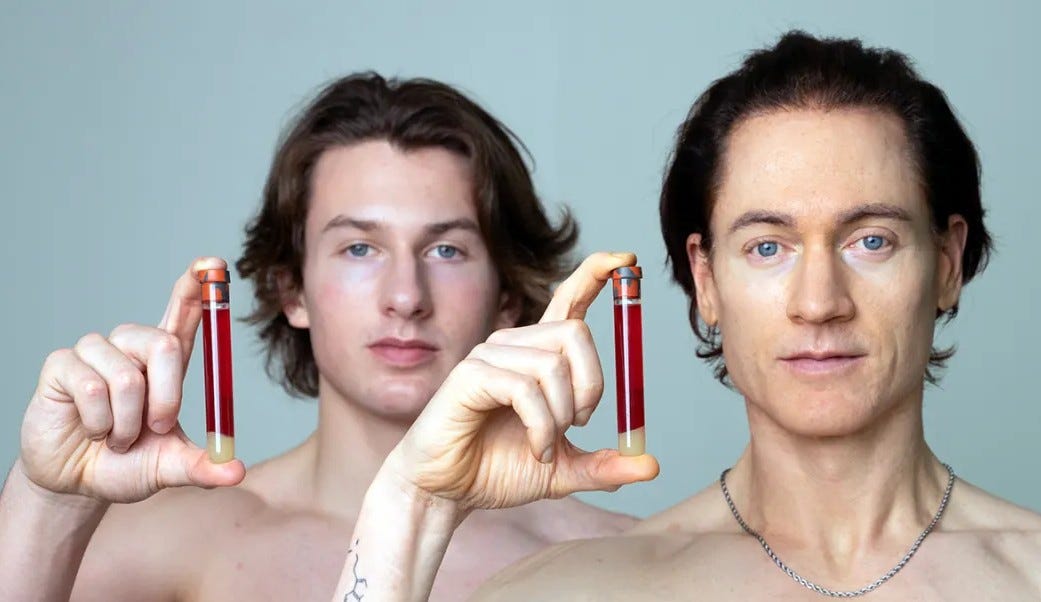When longevity becomes prevention: looking for system-level impact in health

In the UK, it’s quite literally true that getting prevention right - keeping people well, rather than solely healing the sick - would have a transformative impact on the economy. In the last few years, we’ve seen a spate of longevity startups, but very few go beyond catering for a small group of wealthy, already-healthy populations - so their ability to make a material preventative impact is limited. And it makes sense, because making money from groups beyond this small population is tough. But we’re starting to see startups get creative in making the economics of population-level prevention work - and given the importance of getting this right for UK Plc, these are the startups that we at Form are particularly excited by.
You can draw a direct line between prevention and the overall health of UK Plc
It’s obvious that a healthier workforce is a more productive one, but prevention is fundamental to the UK economy in another sense. Underpinning so much of the debate about the state’s ability to create a pro-growth environment is the question over the long-term sustainability of our health system. In 1949-50, health spending accounted for 13% of government spending; by 2022-23, that had risen to 29%. The need to funnel state expenditure into the health system has increasingly limited the state’s ability to create a good environment to start and scale a company - whether that’s because we need prohibitively high tax rates to support government spending (link), or because we can’t afford to invest in the infrastructure that underpins so much of a functioning economy.
It’s tough for longevity startups to go beyond the wealthy, already-healthy segment, and this limits their preventative potential
At Form we use “longevity” to talk about technology that can extend an individual’s healthy life. We use “prevention” when we’re talking about maintaining the good health of a population, or significant segment of that population. So when does longevity become prevention?
Generally, longevity startups begin to have material preventative impact in one of two ways: either by significantly moving the dial for people who tend to have a high impact on the health system; or by having a more marginal impact on a broad base of people. Otherwise you’re not really removing demand from the existing system: you’re either helping too few people, or you’re not really helping those who actually need the help.
With most longevity startups we look at, they struggle to do either of these things. Instead, they get “stuck” in the (quite small) wealthy, already-healthy segment, and this is primarily down to the economics of prevention - more specifically, the difficulty of finding a customer set that makes prevention pay as a venture backed startup:
B2C - For those with consumer go to markets, it makes sense to target the wallets of those who can afford discretionary spend on longevity products - and where the interest in longevity products (which are still in many senses novel) is highest. The problem is, the wealthiest segment is also the segment that places the lowest burden on the health system, whether that’s because of access to healthier food options; lower stress levels; access to PMI; or other reasons that the wealthy already enjoy the best health outcomes. Focusing here as a startup makes financial sense, but the ability to shift the dial at the system level is vastly reduced by how healthy the group already is. In fact, there is a risk that longevity products here (such as the recent glut of full-body scan startups) will increase the burden on health systems, as they push more “worried well” into the top of the funnel, increasing demand on the system, rather than mitigating it.
B2B2C - The B2B2C tends again to be focused on the benefits channel for the higher income segments, because benefit budgets tend to scale with salaries.
B2G - Selling to Government may seem to be the most direct route to having population level impact, because it falls so squarely in Government’s interest to keep people healthy, and there have already been several policy interventions here (e.g. the UK’s Soft Drinks Industry Levy) to this end. But understandably founders tend to want to avoid the long sales cycle of public sector procurement, and this process becomes even harder if you are building a novel service which the Government (at whichever layer - NHS, or other) is not already purchasing (i.e. there is no existing “line item” for the service on offer).
Getting creative to make the economics of prevention work
At Form, we’ve started to see founders take creative approaches to overcome this challenge. For instance, we’ve seen founders target different B2B2C buyers - selling to enterprise but not through the conventional benefits channel, which has become increasingly congested, but by tapping into different enterprise budgets (like Infection Control and Prevention expenditure). Or we’ve seen startups selling B2C, starting in the wealthy segment with high ARPU, before bringing different lower cost models to market for the broader population. Or even startups braving the B2G go to market, but with the network and patience to make it work.
We’re really interested in the longevity space, but we’re even more interested in founders building in spaces that can really move the dial for the health system by keeping people healthy. It’s not that every longevity startup should aspire to this level of impact but only that if you claim that you’ll have a material preventative impact on the health system, the economics question needs to be addressed. So much of the UK’s future prosperity depends upon solving this. If you’re building in that space, please reach out!



